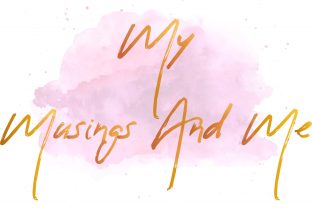
Suicide Prevention Day happens every year. And it’s importance can’t be overestimated. The Office of National Statistics suicide figures show that the number of suicides in the UK are at their highest since 2002. For young people’s (aged 10 – 24) numbers are at their highest for 19 years and for young women it’s reached it’s highest record ever (read more here). No matter how hard we’re trying, and many campaigners are doing phenomenal work, this isn’t good enough. I’m sure you’ll all agree that even one suicide is one too many.
Social Capital & Voluntary Sector
Despite the excellent work already being done. Rates of suicide continue to be a massive public health issue. It’s been a pandemic far longer than Covid has. So, what’s getting in our way? We know our mental health services are nowhere near where they need to be. We know there’s not enough money for mental health. Data shows us that whilst mental health problems account for 23 per cent of the burden of disease in the United Kingdom. Mental health services receive only 11 per cent of the NHS budget. The knock on impact is, of course, long waiting lists for services and a lack of research.
Due to these obstacles, we need to consider the social capital we have in our communities. This includes many voluntary organisations which are doing work in the field of suicide prevention and support. These organisations provide vital support, education and awareness. They are often pivotal in helping people whilst they wait for a referral for mental health support. In the UK, these organisations include, but are not limited to:
- Papyrus Prevention of Young Suicide which includes HopeLineUK for those under the age of 35 available 9am – midnight.
- SHOUT a 24/7 crisis text service for all
- CALM, the Campaign Against Living Miserably providing support to men via webchat and helpline from 5pm – midnight
- The Ollie Foundation providing suicide intervention, prevention and awareness training
- Samaritans providing a free 24/7 helpline
And whilst we may be rich in voluntary sector organisations. We need to consider our own roles in early intervention and prevention.
What Can I Do?
But what can the rest of us do? We don’t all have personal experiences we can speak about. And even if we do, we need to consider our own mental health in the midst of sharing extremely personal memories and feelings. Sometimes we may be unaware of how vulnerable it can make us feel. We also need to consider the impact of sharing these stories with our audiences. And what may be the knock on impact too. If we do have experiences, there should never be a pressure to share these. No-one should ever make you feel like it is your duty to do so.
For 4 Ways to Check In with Your Mental Health read here.
Whatever our relationship with our mental health, we all still have a role we can play. By opening up the conversation on suicide. Whether that is having conversations with people in the community if we have a concern around a suicide risk. And knowing how to do this appropriately and the boundary of our own role. Or using relevant opportunities to help erase the stigma around suicide. Through sharing relevant information and knowledge or our use of language.
Ask & Educate About Suicide

We can all learn the skills to ask about suicide and signpost to appropriate support. Often the hesitation around asking is that we will give someone the idea to do so. We know this is untrue. Both Mental Health First Aid courses and Suicide First Aid courses are based on asking about suicide. If someone is not vulnerable than asking won’t give them the idea. It’s not on their radar. If someone is already vulnerable, then beginning the conversation for them can be a huge relief. It takes the pressure off finding someone to talk to. And guarantees a non-judgemental response which is often a key concern. Having someone show that they are open to the conversation can help someone take that first step towards support.
This may not feel accessible for everyone. We don’t all feel comfortable about asking about suicide. That’s okay too. Whilst these courses are aimed at people in the community. Do think about your own mental health before booking a course or beginning a conversation. If you’re not in the right headspace to ask, you can always ask someone else to do it.
For The 9 Tips You Need to Hold Boundaries read here.
How to Talk About Suicide
Historic Language
Language around suicide is key to breaking down stigma. We can all help guide people to using the most appropriate language or role model using correct terminology. Whilst our awareness of destigmatizing language around suicide gaining ground. The term “commit” suicide still continues to be used. This continues to suggest suicide as a crime, and hints to a stigmatizing history when suicide was deemed a crime. And yet, despite suicide being decriminalised in the UK in 1961; the language is pervasive. The term “completed” suicide has been suggested as a replacement. And whilst that removes the criminal connotations. It doesn’t quite fit. Completion has connotations of achievement or success. And thus, isn’t the right terminology either. For the same reason, we avoid talking about a “successful” suicide attempt. In this case, success would equal loss of life and failure would equate to life.
Appropriate Language
The preferred language around suicide is “died by suicide” or even “suicided”. I also use the term “lost their life to suicide”. And when it comes to an attempt, we talk about “survived” a suicide attempt. It can take time for us to find our comfort zone in terms of what we feel comfortable doing or saying. It may take us some time to feel comfortable asking people about suicide and providing appropriate signposting. If you’d like to gain skills and increase confidence in this area I encourage you to attend a Suicide or Mental Health First Aid course. Likewise, we may wish to educate ourselves around suicide, and the websites above provide a good starting point. There are also many books and podcasts that we can access too. And, of course, supporting our voluntary sector through volunteering or donating is incredible too.
Whichever of these options feel comfortable to you. Or the areas where you’d like to increase skills, knowledge or contribute. We all have a role to play. Suicide prevention and intervention is for everyone.
For 10 Myths about Mental Health & Mental Illness read here.
For The 11 Top Tips You Need for Effective Listening read here.
If you would like to be able to support people – not for long term support – but to know what to do if someone is in suicidal crisis please make sure you attend a reputable training course. Courses like Suicide First Aid and Mental Health First Aid are aimed at people in the community so we can support each other.
What are your thoughts on suicide prevention and intervention? What resources are you aware of in the community?
